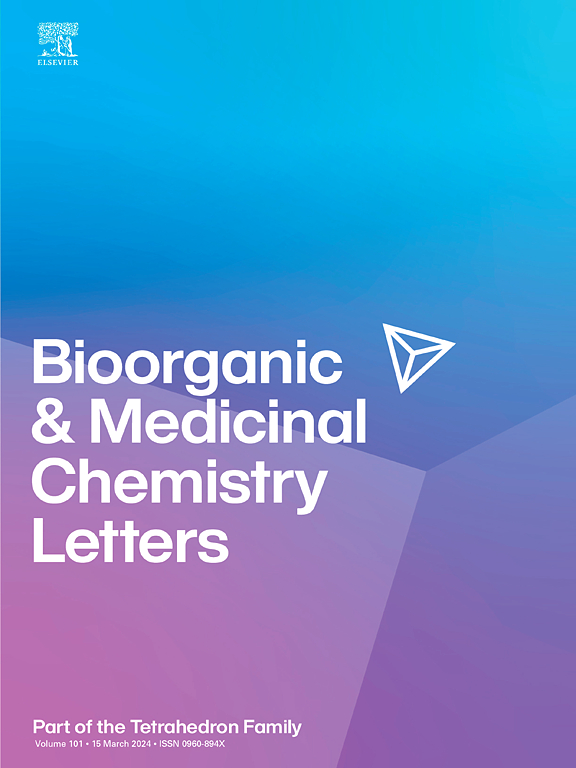Genipin衍生物通过调控EGFR/JAK1/STAT3信号通路诱导A549癌细胞凋亡,抑制其侵袭和迁移
IF 2.2
4区 医学
Q3 CHEMISTRY, MEDICINAL
引用次数: 0
摘要
Genipin是一种从栀子花果实中提取的天然化合物,已被证明对各种恶性肿瘤有抗癌作用,包括胃癌、宫颈癌、乳腺癌和肺癌。本研究设计、合成了一系列吉尼平衍生物,并对其抗A549非小细胞肺癌(NSCLC)细胞的活性进行了评价,以鉴定更有效的类似物并阐明其作用机制。几种衍生物表现出比genipin更强的抗增殖作用,其中化合物2b显示出最有效的活性(IC₅0 = 117 μM)并有效抑制菌落的形成。进一步研究发现2b可诱导细胞周期阻滞和凋亡细胞死亡。在机制上,2b抑制EGFR、JAK1和STAT3的磷酸化,调节上皮-间质转化(epithelial-mesenchymal transition, EMT)相关蛋白的表达,从而减弱细胞迁移和侵袭。值得注意的是,尽管2b在体外不抑制atp依赖性的EGFR激酶活性,但分子对接模拟表明,它与EGFR胞外结构域(结构域III)结合,这表明了另一种不依赖atp的机制,可能是通过干扰EGF结合。总的来说,这些结果突出了2b (MRC-G-001)作为一种有前途的铅样化合物,可以进一步优化和临床前开发,靶向egfr驱动的A549癌细胞。本文章由计算机程序翻译,如有差异,请以英文原文为准。

Genipin derivative induced the apoptosis and inhibited the invasion and migration of A549 cancer cells via regulation of EGFR/JAK1/STAT3 signaling
Genipin, a natural compound derived from the fruit of Gardenia jasminoides, has demonstrated anticancer effects in various malignancies, including gastric, cervical, breast, and lung cancers. In this study, a series of genipin derivatives was designed, synthesized, and evaluated for their anticancer activity against A549 non-small-cell lung cancer (NSCLC) cells to identify more potent analogs and elucidate their mechanisms of action. Several derivatives exhibited stronger antiproliferative effects than genipin, with compound 2b showing the most potent activity (IC₅₀ = 117 μM) and effectively suppressing colony formation. Further investigations revealed that 2b induced cell cycle arrest and apoptotic cell death. Mechanistically, 2b inhibited the phosphorylation of EGFR, JAK1, and STAT3, and modulated epithelial–mesenchymal transition (EMT)-related protein expression, thereby attenuating cell migration and invasion. Notably, although 2b did not inhibit ATP-dependent EGFR kinase activity in vitro, molecular docking simulations indicated its binding to the EGFR extracellular domain (domain III), suggesting an alternative, ATP-independent mechanism—likely via interference with EGF binding. Collectively, these results highlight 2b (MRC-G-001) as a promising lead-like compound for further optimization and preclinical development targeting EGFR-driven A549 cancer cells.
求助全文
通过发布文献求助,成功后即可免费获取论文全文。
去求助
来源期刊
CiteScore
5.70
自引率
3.70%
发文量
463
审稿时长
27 days
期刊介绍:
Bioorganic & Medicinal Chemistry Letters presents preliminary experimental or theoretical research results of outstanding significance and timeliness on all aspects of science at the interface of chemistry and biology and on major advances in drug design and development. The journal publishes articles in the form of communications reporting experimental or theoretical results of special interest, and strives to provide maximum dissemination to a large, international audience.

 求助内容:
求助内容: 应助结果提醒方式:
应助结果提醒方式:


